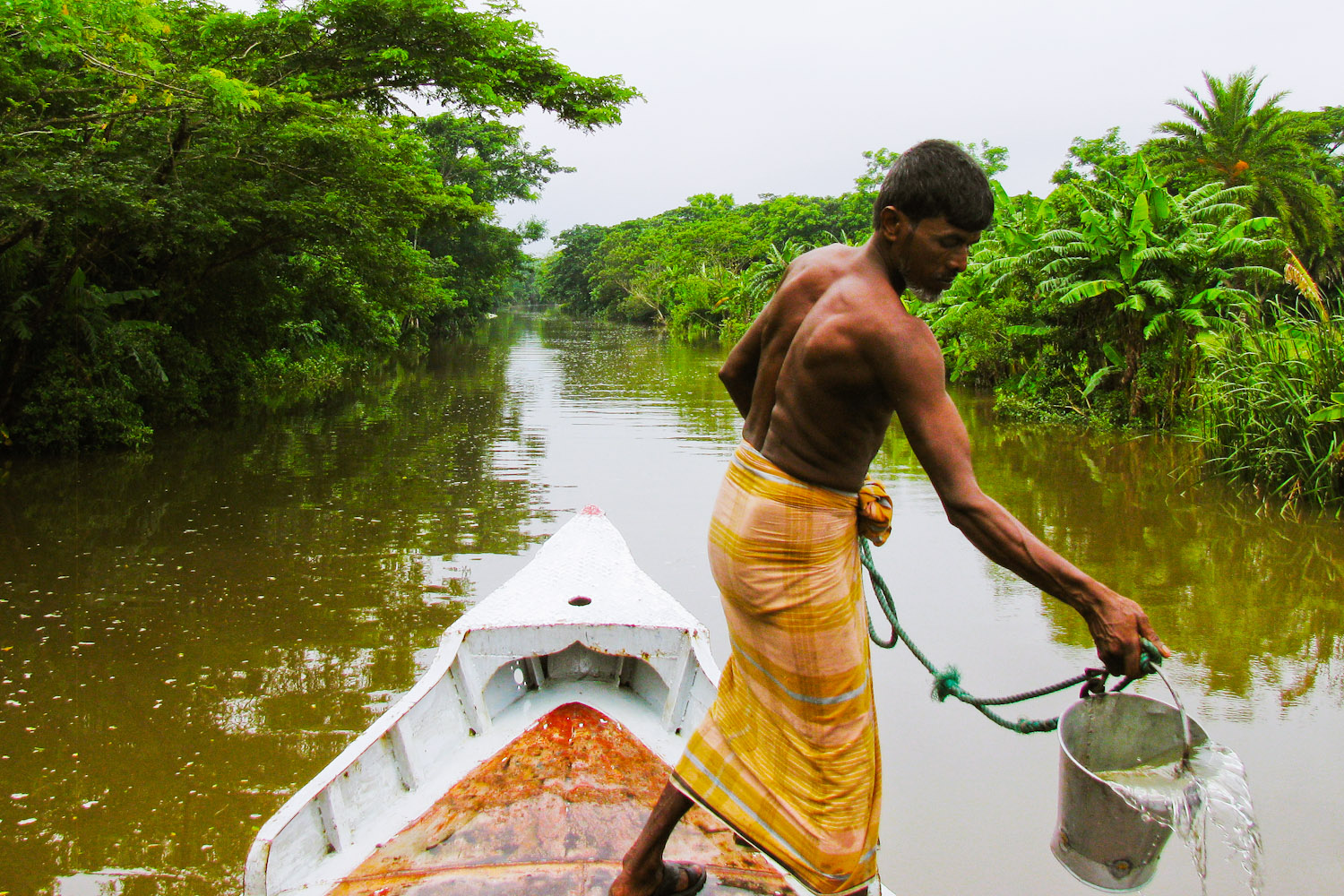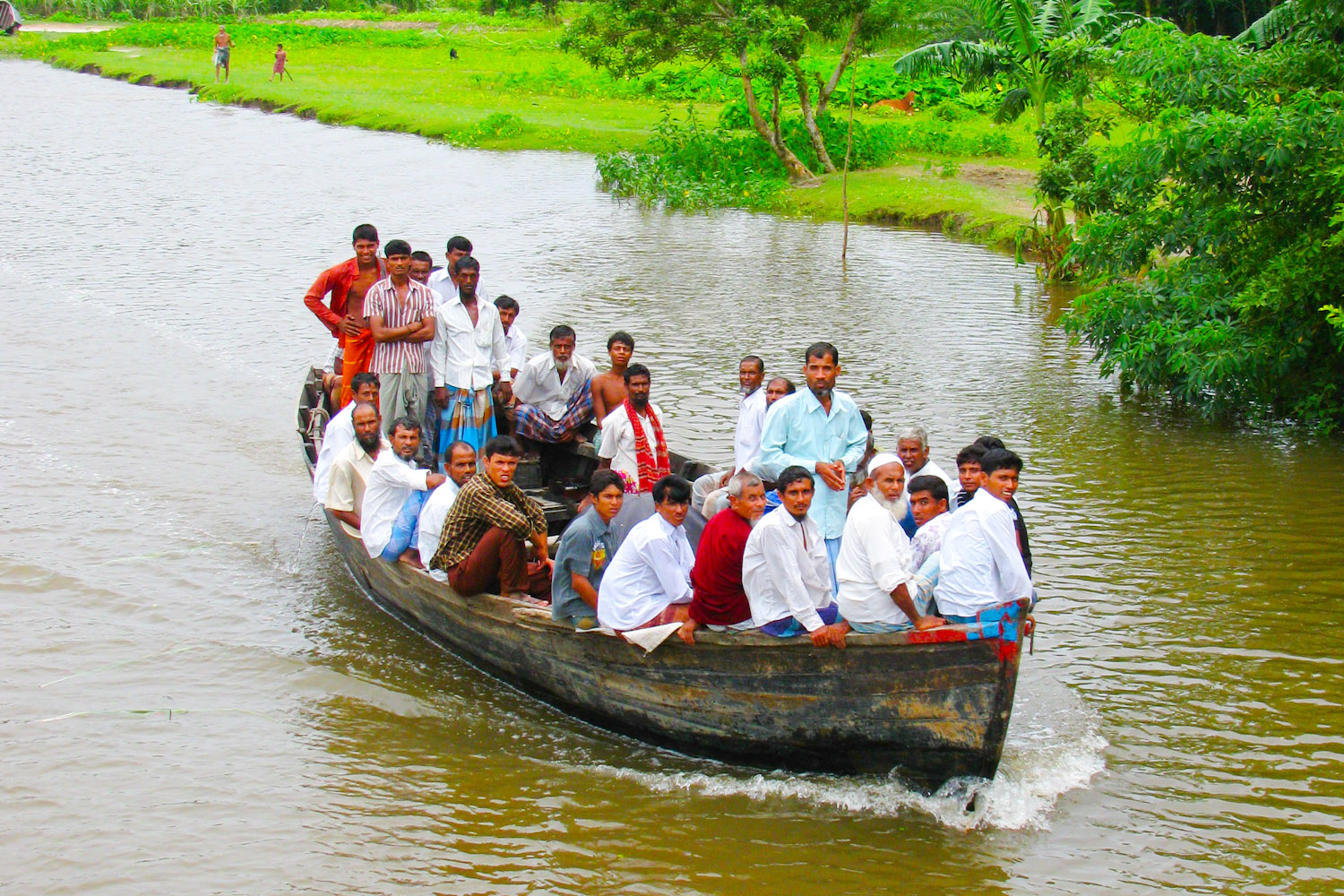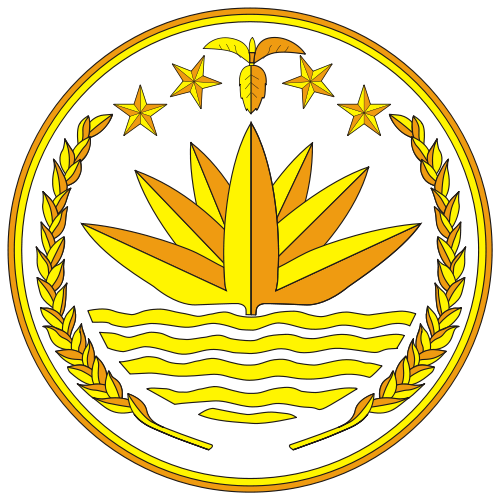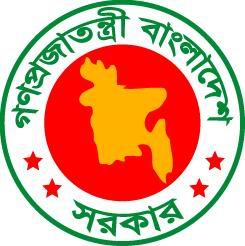Bangladesh's Second National Communication - In Progress
Project Overview
The creation of a National Communication offers countries the opportunity to contribute with technically sound studies and information that can be used for designing mitigation and adaptation measures, and project proposals that can and will help increase their resilience to the impacts of climate change. Activities generally include: V&A assessments, Greenhouse Gas Inventory preparation, Mitigation Analysis or Education, and awareness raising activities. The ultimate goal is the integration of climate change considerations into relevant social, economic and environmental policies and actions.
Project Details
Bangladesh remains one of the world’s poorest and most densely populated countries despite its considerable development gains in the past several decades, including in the areas of gender parity, education, and infant and maternal health (MEF, 2009). Low economic strength, inadequate infrastructure, low level of social development, lack of institutional capacity, and a higher dependency on the natural resource base makes Bangladesh particularly vulnerable to climate stimuli (including both variability as well as extreme events). Recognizing these vulnerabilities, Bangladesh has developed many adaptation measures to address adverse effects of climate change based on existing coping mechanisms and practices.
Although Bangladesh is among the least developed countries in the world, the country has developed good adaptation approaches, especially in the field of disaster management. Bangladesh has always had to fight floods and other natural disasters; therefore, despite limited resources it has developed a comprehensive system in order to handle these threats. However, unlike countries such as the Netherlands, Bangladesh cannot protect the whole population from the consequences of climate change. The goal is rather to minimize the impacts on people and the economy. The most important natural disaster program is the Comprehensive Disaster Management Programme (CDMP), initiated by the government in 2003. CDMP is a comprehensive program that aims to limit the long-term risks and to build operative capacities in the field of disaster control. It also deals with many of the main adaptation challenges. The program is supported both by UNDP and by the British development organization Department for International Development (DFID). The CDMP also includes central guidelines and strategies for the Ministry of Food and Disaster Management (MoFDM), established in 2003. In addition to the steering committee, which is the central decision-making body, there is the Program, Policy and Partnership Development Unit (PPPDU), tasked with coordinating the different actors involved, as well as with mainstreaming disaster control and development policy. The CDMP is complemented by UNDP’s Participatory Disaster Management Programme (PDMP), which also serves other Asian countries.
In Bangladesh, the program targets the most urgent measures with a short-term implementation horizon. It is an action- and project-based addition to CDMP’s strategy, focusing on simple preventive measures and on handling the consequences of natural disasters. Action plans are developed in cooperation with the most important stakeholders in the region. Other measures include the training of catastrophe management staff, the implementation of local risk reduction concepts, and the establishment of early warning systems. In 2005, Bangladesh also developed a National Adaptation Programme of Action (NAPA) within the framework of the UNFCCC. The preparation process was handled by a steering committee of representatives of the most important ministries. The Ministry of Environment and Forest (MoEF) leads the project. During the development of the plan, strategy workshops with affected stakeholders were organized, and NGOs and academics were involved in the process. The plan identifies the most important vulnerabilities, and recommends a comprehensive catalog of prioritized measures. The 15 most important measures are accompanied by a specific project.
Sources:
- Dr. Hans-Peter Meister, I. K., Martina Richwein, Wilson Rickerson, Chad Laurent.
- Floating Houses and Mosquito Nets: Emerging Climate Change Adaptation Strategies Around the World.
- Boston: Meister Consultants Group. p. 67-69._ For more detailed information and references refer to [Floating Houses - Full Report](http://files.mc-group.com/clst/Study%20Climate%20Change%20Adaption.pdf).
- Increase resilience of most vulnerable groups through community-level adaptation, diversification of livelihoods, improved access to services and social protection schemes (e.g. insurance);Develop climate resilient cropping systems (including agricultural research), as well as fisheries and livestock systems to ensure local and national food security;
- Implement surveillance systems for existing and new disease risks and to ensure health systems are poised to meet future demands; and
- Implement drinking water and sanitation programs in areas at risk from climate change, including coastal zones and other flood- and drought-prone areas.
- Improve the government’s and civil society’s ability to manage natural disasters and ensure that effective policies, laws, and regulations are in place;
- Enhance community-based adaptation programs and ensure they are in place in disaster prone parts of the country; and
- Enhance cyclone, storm surge, and flood early-warning systems.
- Infrastructure Repair existing infrastructure – including coastal embankments, river embankments, and drainage systems – to ensure effective operation and maintenance systems;
- Plan, design and construct needed new infrastructure, including cyclone shelters, coastal and river embankments, water management systems, urban drainage systems, etc.; and
- Undertake strategic planning of future infrastructure needs, and take into account (a) patterns of urbanization and socioeconomic development; and (b) the changing hydrology of the country.
Research and knowledge management. Actions include:
- Improve climate change modeling scenarios for Bangladesh by applying methodologies at the regional and national levels;
- Model the likely hydrological impacts of climate change in the Ganges-Brahmaputra-Meghna system in order to assess future system discharges and river levels to feed into flood protection embankment measures;
- Monitor and research the impacts of climate change on ecosystems and biodiversity;
- Analyze the impacts of climate change on Bangladesh’s macro-economy as well as key sectors;
- Research the linkages between climate change, poverty, health, and vulnerability in order to ascertain how the resilience of the most vulnerable households may be improved; and
- Create a Centre for Research and Knowledge Management on Climate Change to ensure that Bangladesh has access to the most current ideas and technologies available globally.
- Revise all government policies to ensure they consider climate change and its impacts;
- Mainstream climate change considerations in national, sectoral, and spatial development planning;
- Build the capacity of key government ministries and agencies to move forward on climate change adaptation;
- Improve the capacity of the government to undertake international and regional negotiations on climate change;
- Build the capacity of government, civil society, and the private sector on carbon financing; and
- Build the capacity for education and training of environmental refugees to ease migration to other countries and integration into new societies.
- Islam, Faisal; Hove, Hilary; Parry, Jo-Ellen. (2011) “Review of Current and Planned Adaptation Action: South Asia.” Adaptation Patnership/International Institute for Sustainable Development, pp.50-74.
Additional References
- Adaptation Knowledge Platform (2010). Summary: Scoping Assessment on Climate Change Adaptation in Bangladesh. Retrieved from http://www.climateadapt.asia/upload/publications/files/4d81c35109ddfScoping_Assessment_on_Climate_Change_Adaptation_in_Bangladesh.pdf
- Anwar, Ali (1999). Climate change impacts and adaptation assessment in Bangladesh. Climate Research. Vol 12: 109-116. Retrieved from http://www.int-res.com/articles/cr/12/c012p109.pdf
- Ayers, Jessica M. and Saleemul Huq (2008). The Value of Linking Mitigation and Adaptation: A case study of Bangladesh. Environmental Management. Retrieved from http://pubs.iied.org/pdfs/G02370.pdf
- Climate Investment Funds (CIF] (2010). Strategic Program for Climate Resilience in Bangladesh. Retrieved from http://www.climateinvestmentfunds.org/cif/sites/climateinvestmentfunds.org/files/PPCR%205%20SPCR%20Bangladesh%20nov2010.pdf
- European Parliament (EP] (2007). Climate Change Impacts and Responses in Bangladesh. Retrieved from http://www.europarl.europa.eu/activities/committees/studies/download.do?file=19195
- Ministry of Environment and Forests (MEF] (2009). Bangladesh Climate Change Strategy and Action Plan 2009. Retrieved from
- http://www.moef.gov.bd/climate_change_strategy2009.pdf
- Ministry of Environment and Forests (2005]. National Adaptation Programme of Action. Retrieved from http://unfccc.int/resource/docs/napa/ban01.pdf
- United States Department of State (USDS] (2010). Background Note: Bangladesh. Retrieved from http://www.state.gov/r/pa/ei/bgn/3452.htm
Key Results and Outputs
- Sustainable development and the integration of climate change concerns into medium- and long-term planning
- Inventories of anthropogenic emissions by sources and removals by sinks of greenhouse gases
- Measures contributing to addressing climate change
- Research and systematic observation
- Climate change impacts, adaptation measures and response strategies
- Education, training and public awareness
Output 1: National Circumstances
- Analyze all available national and sectoral strategies, plans, programmes and studies relevant to the formulation of the SNC, including national development blueprints and poverty reduction strategy papers and strategies.
- Collect and analyze information on specific needs and concerns arising from climate change impacts and/or the implications of the implementation of prioritized response measures.
- Update the information base on national circumstances.
- Prepare a Draft National Circumstances chapter of the SNC based on outputs of the above activities.
- Conduct consultation of stakeholders on the draft national circumstances chapter, and finalize as an input to the SNC by incorporating comments and feedbacks of stakeholders.
- Workshops/consultations on National Circumstances
- Peer review of Output-1 Documents
- Incorporation of workshop comments & reviewers’ comments
Output 2: GHG Inventory
- Mobilize a core Inventory Team involving sector-specific experts.
- Develop a work programme for the GHG Inventory preparation.
- Familiarization with revised 1996 IPCC Guidelines etc.
- Technical Review of 1990 & 1994 inventories, identification of data gaps and areas requiring improvement.
- Review and select methodologies, identify level of analysis for each sector
- Identify relevant national institutions from where activity data will be gathered and build their capacity to collect/share activity data.
- Review of reporting instructions for GHG inventory.
- Identification of priority GHGs, analyze key source categories (organizing a national workshop).
- Collection of activity data and develop inventory datasets.
- Review and select appropriate emission factors, and if necessary develop local emission factors.
- Prepare GHG Inventory
- Build national capacity on inventory preparation by offering a training course for relevant institutional representatives.
- Carry out uncertainty assessment of emission coefficients.
- Conduct stakeholder consultation on relevant key emission coefficients & devise cost-effective modalities to collect/generate such data.
- Organize capacity building exercises for CCC/DOE and other government personnel
- Prepare draft National Emission Inventory Report
- Organize peer reviewing of GHG Emission Inventory
- Finalize Inventory by incorporation of review comments
Output 3: Measures to Mitigate Climate Change
- Review USCCCSP, ALGAS, INC and other documents to evaluate mitigation from various activities/ sectors.
- Assess whether and how far the current policy regime has ensured GHG mitigation as an autonomous development.
- Assess potential of the above mitigation measures against the emission inventory.
- Identify individual mitigation options having potential for win-win scenario.
- Organize training on mitigation options involving public and private sector representatives, specialists and experts.
- Organize national stakeholder consultation and prioritize win-win mitigation options mentioned above.
- Analyze top three win-win mitigation options.
- Identify institutional/policy barriers for each of these options and develop/propose mechanisms to remove such barriers.
- Assess whether any of these measures have actual potential to become one or more CDM-able project and share with the DNA for CDM project formulation.
- Develop a Draft National Mitigation Strategy, keeping in view the post-Kyoto deliberations
- Organize awareness workshop on mitigation options
- Organize a NTAC Meeting for discussing mitigation issues/outcomes.
- Arrange Peer reviewing of the Draft National Mitigation Strategy.
- Incorporate the findings of the informed roundtable and finalize the National Mitigation Strategy.
Output 4: Measures to facilitate Adaptation to CC
- Provide an updated synthesis on vulnerability to climate change.
- Check consistency in national climatological datasets by using globally accepted models (such as Climdex) and consider correction measures as necessary.
- Analyze national trends on climate parameters such as temperature, rainfall, degree of aridity, etc. on the basis of past observed datasets.
- Pull national experiences on adaptation in various sectors and devise new programmes/ activities to reduce vulnerability at various tiers.
- Assess current institutional weaknesses including those in the policy regime, which act barriers of mainstreaming adaptation, and devise mechanisms to overcome such identified barriers.
- Establish synergies between adaptation to climate change and UNCBD as well as UNCCD
- Synthesize a Draft National Adaptation Strategy, based on NAPA and other documents, and establish linkages among strategic measures and national poverty reduction strategy paper as well as MDGs.
- Conduct at least two National Consultations on the Draft National
- Adaptation Strategy for awareness creation among stakeholders, particularly among National Focal Points (NFP) and KnoCC members, and endorsement.
- Organize a NTAC Meeting for discussing adaptation modalities.
- Arrange Peer reviewing the Draft National Adaptation Strategy.
- Incorporate reviews and comments of NFPs and National Steering
- Committee (NSC) as well as National Technical Advisory Committee (NTAC) members towards finalize the National Adaptation Strategy.
Output 5: Other information considered relevant
- Identify needs for awareness raising, capacity building, and education programmes on climate change issues.
- Preparation of a working paper on climate resilient development with particular focus on Bangladesh.
- Identify technology and financial resources needs
- Formulate a sustainable institutional mechanism for collection of emission related activity data, institutional advancements made in view of mainstreaming/servicing adaptation, and good practices on adaptation.
- Assess constraints and gaps towards the development of SNC.
- Identify national needs for technology transfer and technology adoption for both mitigation and adaptation
- Drafting of a Technical Report on constraints and gaps, and on assessment of technical, capacity and financial needs for institutionalizing the periodic preparation of National Communications in Future.
- Arrange Peer Reviewing of the products developed.
- Organize a stakeholder consultation. Invite/involve NTAC members.
- Finalize the products.
Concluding Phase
- Compile all the reports and draft the National Communication based on reports/documents being generated.
- Organize a National Workshop on information/results dissemination.
- Arrange peer reviewing of the Draft Final Report.
- Finalize the National Communication (report).
- Place the National Communication Report to the NSC for endorsement
- Publish the National Communication and disseminate.
Monitoring and Evaluation
In 1992, countries joined an international treaty, the United Nations Framework Convention on Climate Change, to cooperatively consider what they could do to limit average global temperature increases and the resulting climate change, and to cope with whatever impacts were, by then, inevitable.
Parties to the Convention must submit national reports on implementation of the Convention to the Conference of the Parties (COP). The required contents of national communications and the timetable for their submission are different for Annex I and non-Annex I Parties. This is in accordance with the principle of "common but differentiated responsibilities" enshrined in the Convention.
The core elements of the national communications for both Annex I and non-Annex I Parties are information on emissions and removals of greenhouse gases (GHGs) and details of the activities a Party has undertaken to implement the Convention. National communications usually contain information on national circumstances, vulnerability assessment, financial resources and transfer of technology, and education, training and public awareness.
Since 1994, governments have invested significant time and resources in the preparation, collection and validation of data on GHG emissions, and the COP has made determined efforts to improve the quality and consistency of the data, which are ensured by established guidelines for reporting. Non-Annex I Parties receive financial and technical assistance in preparing their national communications, facilitated by the UNFCCC secretariat.






